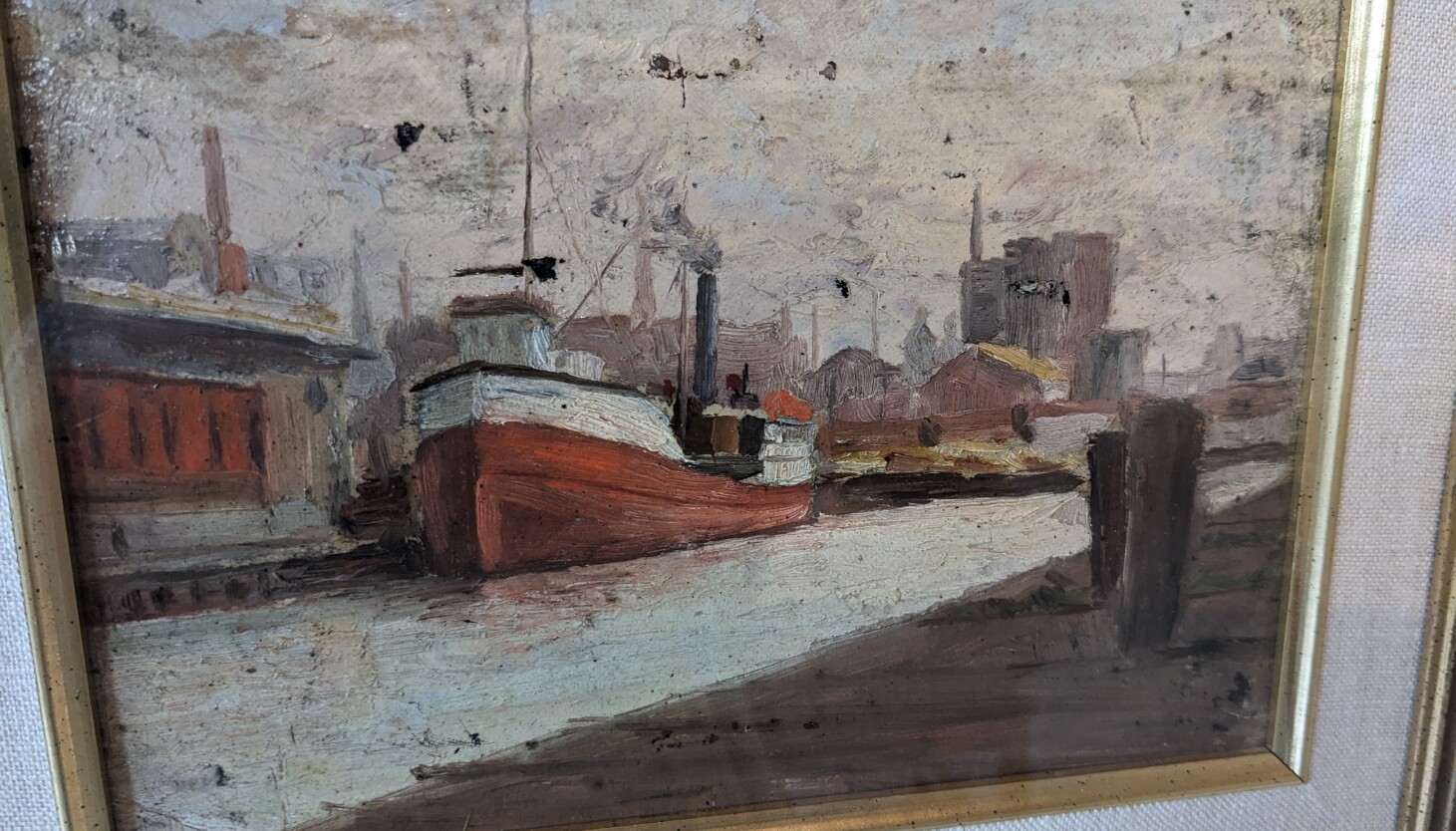Delving into natural mysteries and questions.
* * *
“Now I wonder how many works of his are out there?” mused Madeline Crispell, Chicago Maritime Museum curator.
This winter five small unsigned Impressionist oil paintings of the Chicago River were exhibited at CMM.
Anne May donated the paintings on behalf of her husband, Philip, a Great Lakes sailor and collector.
Crispell researched who did the paintings. Much pointed to May’s guess that it was Black house painter James Bolivar Needham.
When the initial exhibit was complete, Crispell checked the back of pieces and found what she hoped for. In the 1800s, Needham began painting the Chicago River, often using parts of shipping crates. Instead of signing his work, he put a red or orange diamond with size, date and other information on the backs of the wood panels. The first one she checked had the magical diamond, so did the others.
Needham’s parents took the Underground Railroad into the Chatham region of Ontario, where James was born. As a teenager, he was deckhand on the Great Lakes before landing in Chicago where he painted buildings, including at the World’s Columbian Exposition.
A fire hit his studio New Year’s Eve 1930, eventually leading to his death. Two commercial painters living on his floor helped to disperse Needham’s paintings, leading Crispell to wonder, “I would love to know how many more people could have them in their attics.”
So far Crispell has found only four times when his work was exhibited, yet he was a darling of those in the know.
“Lorado Taft, Lucy Parsons, [and others] keep butting up against his story in many ways,” Crispell said.
Taft, noted Illinois sculptor, author and educator, praised Needham’s work. Parsons was an anarchist whose husband Albert escaped to Wisconsin after the Haymarket Riot and found Needham’s father’s church.
Crispell dug up much so far, with the help of work done by Wendy Greenhouse, former curator at the Chicago History Museum.
Crispell found one written thing by Needham, a letter within “Help’s Develop Art” by LVN in the Sunday Inter Ocean (a Chicago newspaper), May 5, 1895. LVN, Crispell found out, is Lucie Van Never.
Part of the letter contained a manifesto for a natural view of doing art: “That people should sit down in a pile of bricks and that they should cross deserts and oceans to sit in a special pile of bricks to get ideas of or about nature is to me insanity. I appreciate the value of the schools, but I suppose if we were stripped of everything relating to art except the impulse and were relegated to barbarism, we would paint and would go to nature for our models. We are consciously or unconsciously students of form and symmetry, and I suppose artistic expression is a heritage. A plowman `striking’ his initial furrow calls into play the same elementary things without which the master’s work would be valueless.”
Needham’s paintings will be up through December and incorporated into the “Art and Labor on the Great Lakes” exhibit opening in early September.
I hope Crispell keeps digging.
* * *
It seems an esoteric academic pursuit, but the change of the scientific name of largemouth bass to Micropterus nigricans has impacts and roots in the Chicago area. Florida bass is Micropterus salmoides, the former largemouth designation.
The change was approved by American Fisheries Society last year. Daemin Kim led that change with the 2022 publication of “Phylogenomics and species delimitation of the economically important Black Basses,” (nature.com/articles/s41598-022-11743-2). It came from Dr. Thomas Near’s lab.
Near, who has been at Yale 18 years, the last six as department chair of ecology and evolutionary biology, journeyed from gang life in the Hamlin Park-Lathrop Homes area to the cutting edge at Yale. (Read Near’s journey in the May 25 Sun-Times.)
Near made a YouTube video (youtube.com/watch?v=zv8Zw59JFdg&t=141s) that explains the change in an intellectual but understandable way.
The world record largemouth was 22 pounds, 4 ounces, caught by George Perry June 2, 1932 in southern Georgia. Largemouth or Florida bass? More importantly, what about the Illinois record largemouth (13-1), caught by Edward Walbel Feb. 15, 1976. It’s such an anomaly that many suspect it was a Florida bass, long before the designation change.

The world record largemouth bass, caught by George Perry in Georgia in 1932, on the cover of Bassmaster Magazine. Largemouth bass now have a new scientific designation while Florida bass assume the former largemouth designation. The split raises questions that will likely be undetermined for world and state records.
I wondered if the record could be checked.
“I have heard that the Illinois record bass was believed to be a Florida bass, which would be of interest with the new category, but to my knowledge there is no way to parse that out,” Illinois fisheries chief Mike McClelland emailed. “A genetic sample would need to be taken from relatively fresh flesh or body material and appropriately preserved or frozen for analysis. It would have been interesting to have had that material years ago!”
Some mysteries remain.


